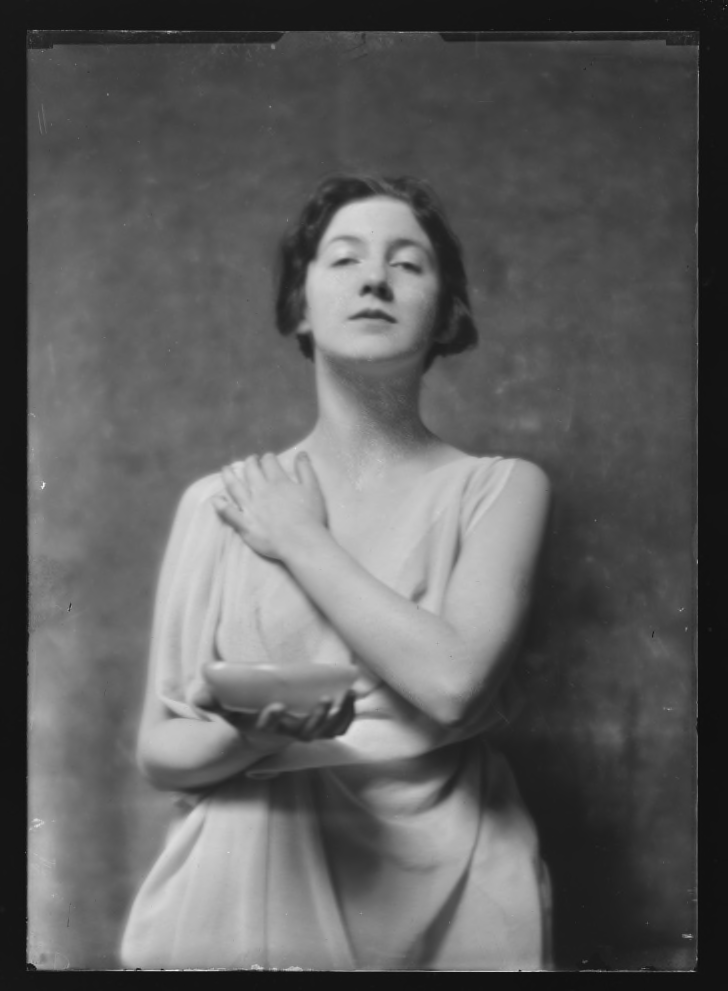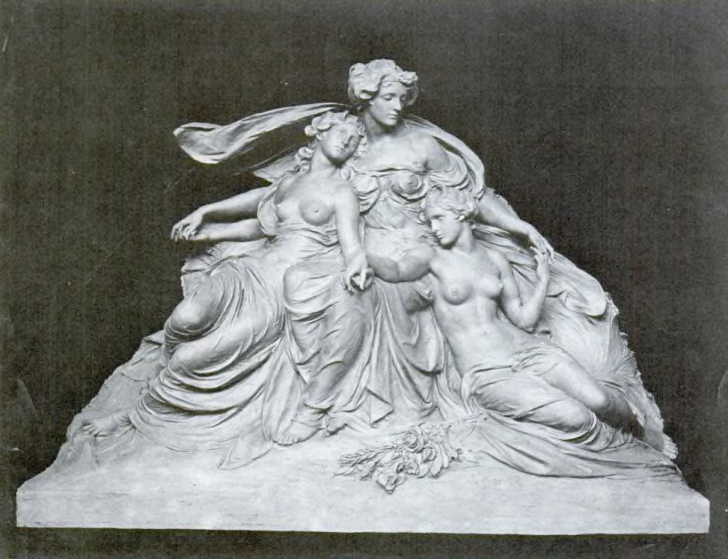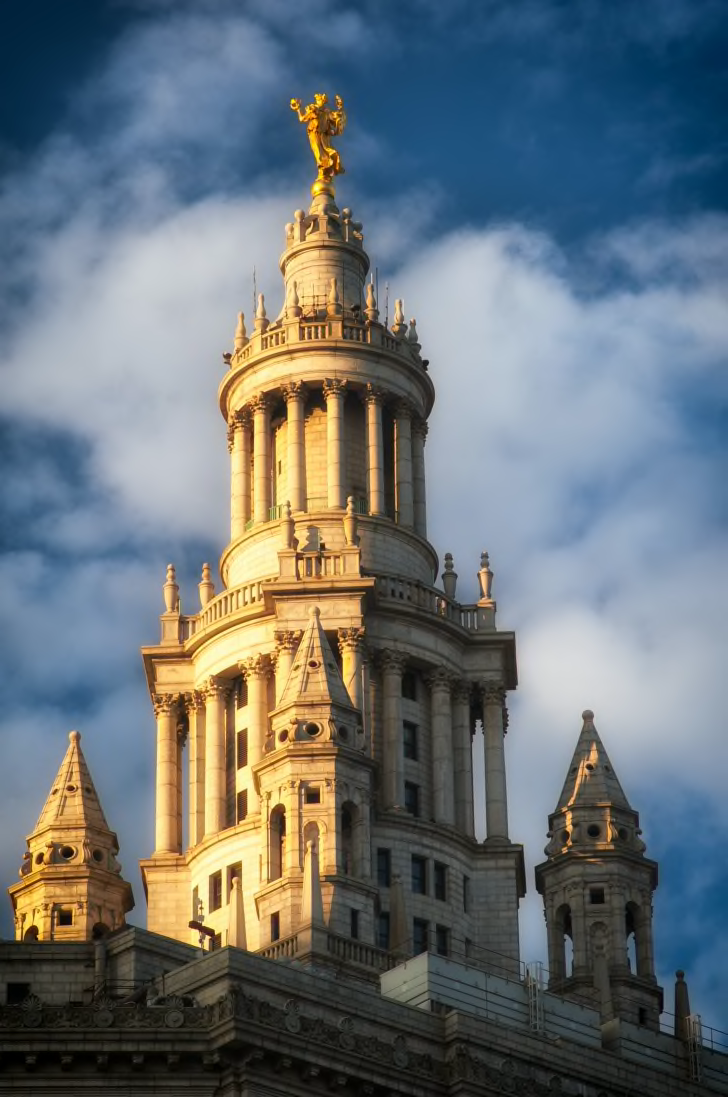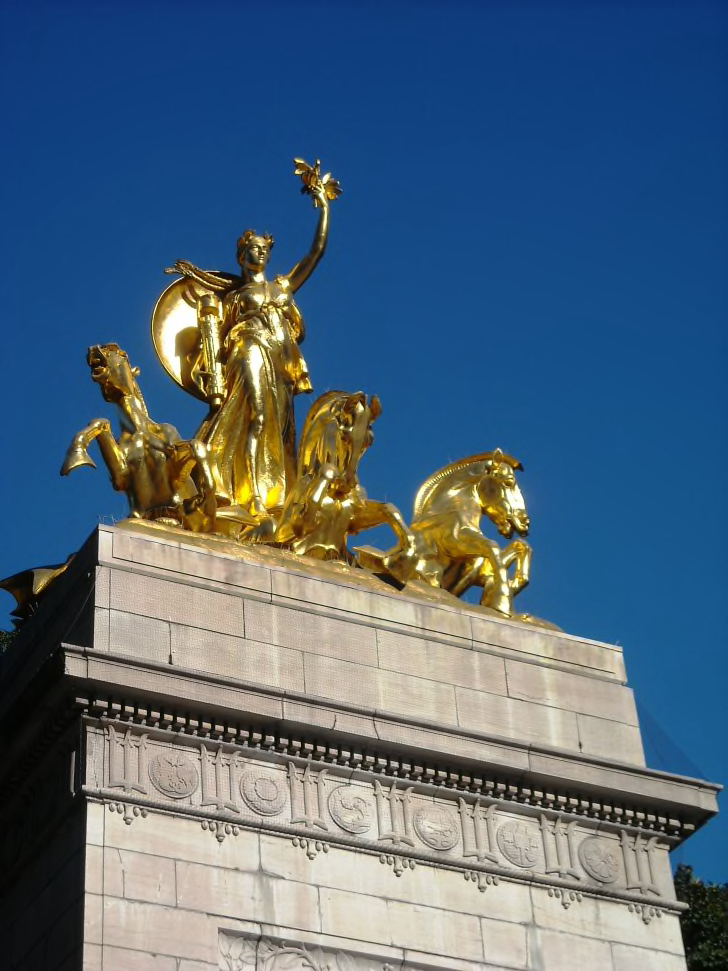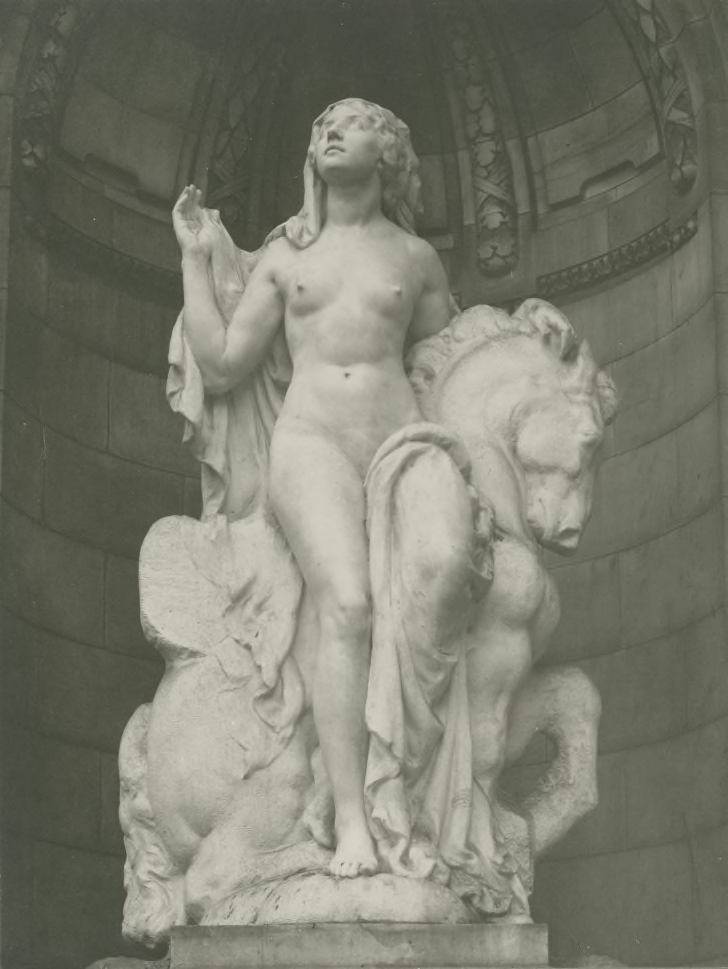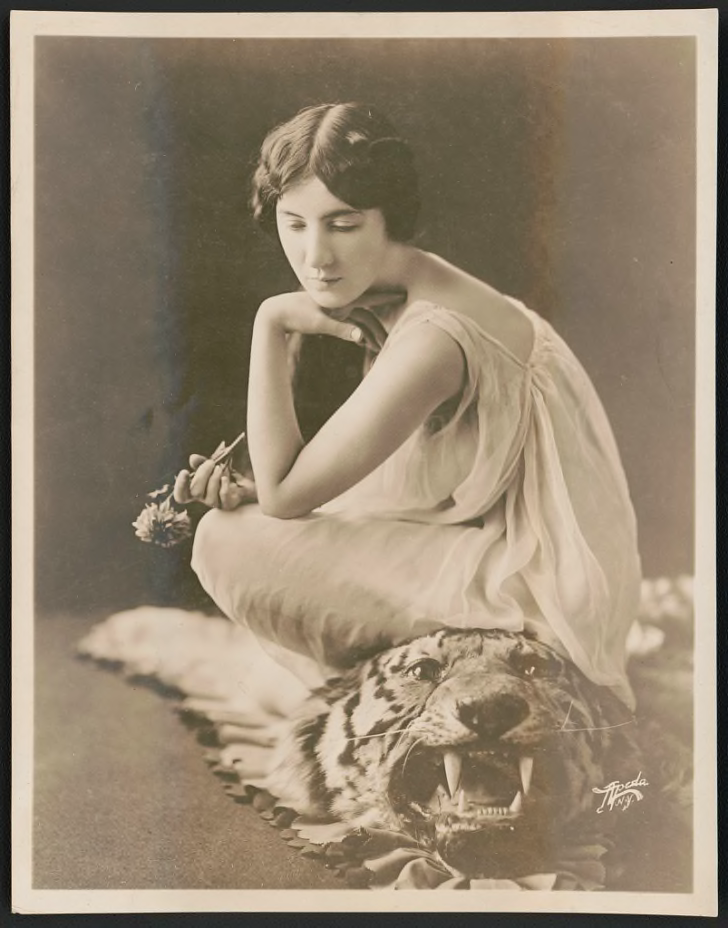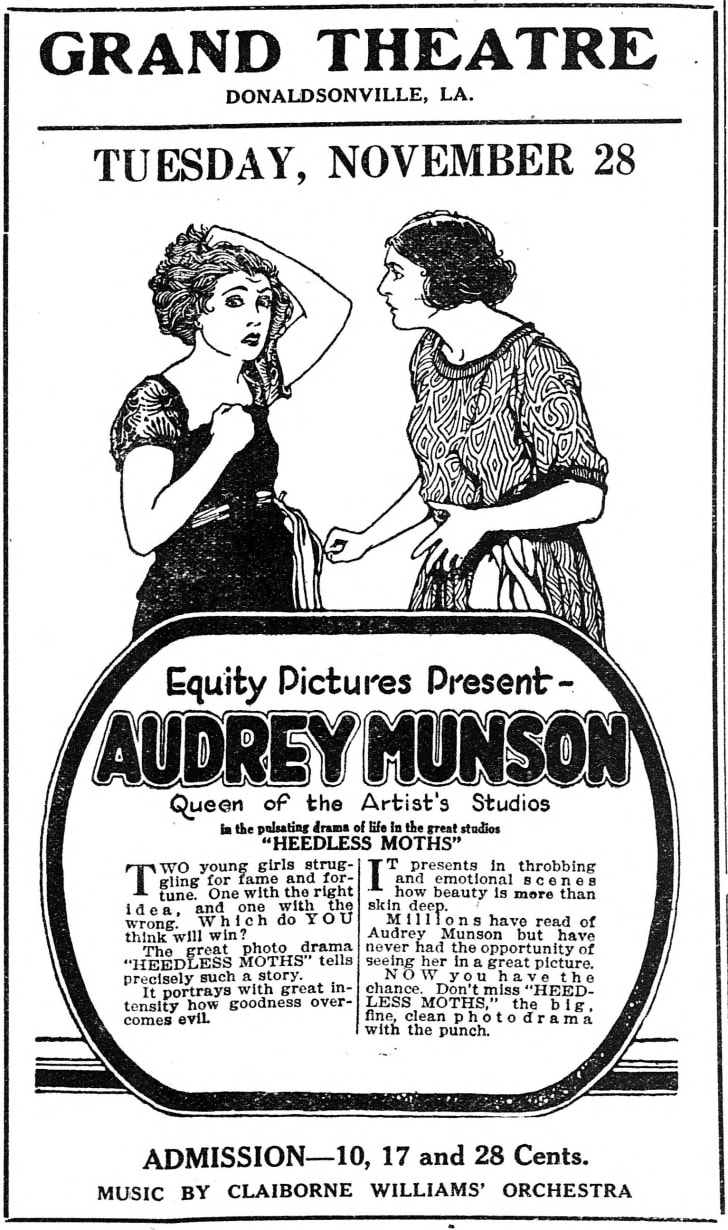Seductive Sunday🔞Audrey Munson💋America’s First Supermodel😍And First Nude Movie Star💘
While you might not know Audrey Munson’s name, you’ve almost certainly seen her likeness somewhere. Munson’s figure can be found in bronze, copper, and marble across New York City, and, in fact, all over the country—Missouri and Wisconsin each have a statue of her atop their State Capitol buildings, for example.
The model posed for some 200 artists throughout her brief career, earning her nicknames like “Miss Manhattan” and “the American Venus,” along with a reputation as the most well-known muse of early 20th-century America. But after an attempt at a film career fizzled out, Munson struggled to reclaim her place among New York’s artist elite. Even as Munson’s image lives on in sculptures and other works, her story is an often overlooked part of art history.
AN IDEAL CHORUS GIRL
Audrey Marie Munson was born on June 8, 1891, in Rochester, New York. Her father, Edgar Munson, was a real estate broker who was descended from one of the founders of New Haven, Connecticut, and her mother, Kittie Mahoney, was the daughter of Irish immigrants. Familial bliss, however, was short-lived—the couple separated when Audrey was only 6, after Kittie caught wind of Edgar’s affair. They divorced two years later.
After the split, Kittie and Audrey began a new life in Providence, Rhode Island. Kittie worked as a boarding housekeeper, and Audrey eventually attended a Catholic high school called St. Francis Xavier Female Academy. It was there, under the tutelage of the Sisters of Mercy, that the young Munson learned how to sing and play the piano, violin, harp, mandolin, and guitar.
By 1908, a 17-year-old Munson had started performing in small shows like the touring production of the musical Marrying Mary. She and her mother relocated to New York the following year so the teenage performer could pursue a career in show business. On May 31, 1909, at 18 years old, Munson set foot on a Broadway stage for the first time, dressed in drag and playing the part of a footman in a musical comedy called The Boy and the Girl.
Around this time, Florenz Ziegfeld, Jr. was beginning to make waves with The Ziegfeld Follies, a series of extravagant variety shows that often featured large choruses of attractive young women who came to be known as “Ziegfeld girls.” Though Munson never performed in one of Ziegfeld’s revues, her arresting beauty and many musical talents made her an ideal chorus girl. She appeared in the choruses of similar productions, including The Girl and the Wizard, Girlies, and La Belle Paree.
Had Munson continued on this path, it’s possible her name would have faded into anonymity with the hundreds of other Broadway hopefuls whose careers petered out once they aged past their chorus-girl prime. But a chance encounter steered her in a drastically different direction.
FROM PERFORMING TO POSING
In late 1909, Munson was window-shopping on 5th Avenue with her mother when she noticed a man paying unusually close attention to her. After she confronted him, he invited her to pose for him in his photography studio.
“We did not like the idea at all,” Munson later said in a 1913 interview for the New York Sun. “But finding out that he was one of the best photographers in town my mother and I went. He took some photographs, said I had a head almost antique in line, and began to tell his artist friends about me.”
The photographer was Felix Benedict Herzog, who was also an accomplished electrical engineer, patent attorney, and inventor. Though his role in Munson’s career only lasted a few years—he died suddenly in April 1912, after complications from intestinal surgery—he jumpstarted her pivot from performing to posing.
As Munson posed for Herzog and his contemporaries, she used her newfound connections to seek out more work. This streak of industriousness led her to the studio of sculptor Isidore Konti, who asked her to model for her first sculpture, The Three Graces, to be displayed in the main ballroom of New York’s Hotel Astor.
It was an extraordinary opportunity, but it came with a catch: Munson would have to pose nude.
MAKING IT TO THE TOP
Though the ever-so-enterprising Munson was open to the idea, her more conservative mother hesitated to endorse it. But after three months of chaperoning her daughter’s (clothed) modeling sessions with Konti, Kittie finally gave Audrey her blessing to bare it all for art’s sake.
Munson quickly became one of New York’s most prolific early models, posing for what she estimated was a total of 200 artists, including photographers, illustrators, painters, sculptors, and even a tapestry weaver. If you’ve been to New York, you’ve almost definitely seen at least a few statues bearing Munson’s image, even if you didn’t realize it—many Manhattan neighborhoods have at least one, and the Metropolitan Museum of Art houses another 30 or so. The caryatids supporting the main saloon’s mantelpiece in one of J.P. Morgan’s yachts were carved from Munson’s likeness, and tapestries in George Vanderbilt’s mansion were designed in her image, too. Since some of the pieces Munson modeled for were privately commissioned, it’s not clear where they ended up (or if they’ve even survived various renovations and relocations).
As for those still prominently displayed, perhaps the most striking piece is Civic Fame, a 25-foot gilded copper statue atop the Manhattan Municipal Building that Adolph Alexander Weinman designed in 1913. It’s New York’s second-largest statue, dwarfed only by the Statue of Liberty herself.
Another gilded version of Munson—bronze, this time—decorates the top of the USS Maine National Monument in Columbus Circle, honoring the 260 sailors who died during the 1898 sinking of the USS Maine in Havana, Cuba. Funded by William Randolph Hearst in 1913, the statue depicts Columbia—the female personification of the United States—riding a seashell chariot pulled by three horse-seahorse hybrid creatures called hippocampi. Sculptor Attilio Piccirilli used metal from the sunken ship for parts of the memorial, which also includes a ship's prow jutting over a fountain and a plaque that lists the victims' names.
Munson is also immortalized in marble outside the New York Public Library’s main branch, the Stephen A. Schwarzman Building. Frederick MacMonnies's Beauty depicts a mostly nude Munson looking skyward as she leans against a horse.
By mid-1913, Munson-inspired works were so prevalent around the city, the New York Sun published a profile on her titled “All New York Bows to the Real Miss Manhattan” in its June 8 issue.
But despite the hundreds of artworks to which Audrey lent her likeness, her paychecks weren't on par with today's Instagram influencers. The going rate for a model at the time—nude or not—was 50 cents an hour, meaning the Munsons lived a modest life. “It was just enough to pay our rent, grocery bills and buy a few clothes once in a while … Almost nothing for amusements,” Munson said in a 1921 newspaper article.
Between the countless hours of sitting, standing, or lying stock-still for artists, Munson branched out into another industry: film.
A FALSE START IN FILM
On November 18, 1915, Thanhouser Company released the silent film Inspiration, and Munson became the first American movie star to appear naked in a non-pornographic film. Loosely based on Munson’s own life, Inspiration tells the story of a young girl discovered in New York by a sculptor in need of a muse; it even features some real-life statues that Munson posed for. Though the film was an overall success, it did stir up some dissent from viewers who balked at the nudity. Local officials actually arrested a theater manager in Ossining, New York, for showing the “improper film,” and the city’s Civic League established a censorship committee to prevent similar calamities from happening in the future. “I saw enough and got all the ‘inspiration’ I wanted,” one member said.
Munson was characteristically undeterred. She and her mother moved to California, where the performer appeared nude again in 1916’s Purity. It was another successful (yet polarizing) motion picture, but it also marked the beginning of the end of Munson’s meteoric rise to fame. Her next film, The Girl O’ Dreams, was never released. The reasons are unknown, but biographer James Bone has speculated it may have been a dispute over film rights—no fault of Munson's.
STRUGGLING TO STAY ABOVE THE FRAY
The Munsons returned to New York in late 1916. Audrey spent the next two years caught up in the high society circles of New York and Newport, Rhode Island, and allegedly struck up a relationship with shipping heir Hermann Oelrichs, Jr. Her mother claimed the two had actually married, though there’s no record to support this.
Whatever feelings Munson had for her purported beau turned sour by early 1919. That January, she sent a strange letter to the U.S. Department of State insisting the German government’s considerable investment in the film industry was preventing her from booking any roles. She listed Oelrichs, Jr. and other well-known German-Americans as co-conspirators in this plot, arguing that they discriminated against her because she was descended from early British settlers. “As you know the Kaisers [sic] $25,000,000 in the Motion Picture Industry has thrown me out of work as I am an American of English blood dating back to the Mayflower days,” she wrote.
Nothing came of Munson's baseless accusations, but her vilification of “the German” and “the German-Jew” in the letter hinted at a festering anti-Semitic streak both Munson and her mother made evident throughout other correspondence.
Things unraveled further in February, when Munson and her mother were brought in for questioning about Dr. Walter K. Wilkins’s murder of his wife, Julia. The press reported that Wilkins, who owned a boarding house where the Munsons had stayed, had been carrying on an affair with a “pretty young woman” many assumed was Audrey. She denied any relationship and even vouched for his character, but the onslaught of negative publicity certainly didn't help her career.
In 1921, Munson attempted to reclaim control of her reputation by telling her life story in 20 serialized articles entitled The Queen of the Artists’ Studios in Hearst’s New York American newspaper. The series was meant to drum up publicity for her new film, Heedless Moths, also based on Munson’s life. But the filmmakers only used Munson herself for a few shots, and gave the majority of her role to newcomer Jane Thomas. It was another instance of others enjoying and profiting from Munson's image with little regard for the woman behind it—an inescapable theme of her career as a model and muse—and her writing reflected her despondence.
“I am wondering if many of my readers have not stood before a masterpiece of lovely sculpture or a remarkable painting of a young girl, her very abandonment of draperies accentuating rather than diminishing her modesty and purity, and asked themselves the question, 'Where is she now, this model who has been so beautiful?'” she wrote in one article. “'What has been her reward? Is she happy and prosperous, or is she sad and forlorn, her beauty gone, leaving only memories in its wake?'”
Not long after that, Munson launched a widely publicized search for “the perfect man.” But Munson had grown up valuing her own English-American beauty above all else, and her idea that marriage should be “for the good of the race” reflected her eugenic, xenophobic, and anti-Semitic tendencies. Though she did choose a husband—Joseph J. Stevenson, a World War I pilot and wealth contractor from Chicago—they never actually pursued their relationship.
By 1922, a dispirited, hapless Munson was living with her mother in Mexico, New York, north of Syracuse. In May of that year, at 28 years old, the former model attempted to swallowed mercury-based poison in an attempt to die by suicide. She survived, but she didn't try to return to the limelight.
A QUIET NEW LIFE
For almost a decade, Munson lived with her mother in upstate New York, where her mental health further deteriorated. In 1931, citing depression, delusions, hallucinations, and more, Kittie committed her daughter to an asylum.
Shortly after she turned 40, Munson moved into the St. Lawrence State Hospital in Ogdensburg, New York. Except for a brief stint in a nursing home, she remained at that hospital for the next 65 years, and her mother's death in 1958 marked the beginning of a 26-year period with no visitors. Then, in 1984, Munson's half-brother's daughter, Darlene Bradley, tracked her down and took her father to be reunited with his long-lost sister. Bradley continued to pay regular visits until her elderly aunt died on February 20, 1996, at 104 years old.
Munson was cremated, and her ashes were placed in her father’s grave at New Haven Cemetery in New Haven, New York. The tombstone listed Edgar Munson, his second wife, Cora, and their daughter, Vivian—but for 20 years, there was no mention that the former star was laid to rest there, too.
In 2016, New Haven town clerk Debra Allen and town historian Marie Strong decided it was time to honor Munson’s legacy with a tombstone of her own. Since they couldn’t allocate town funds for that purpose, they entered and won numerous county fair baking contests. The two spent their prize money on a simple, elegant tombstone etched with flowers and the words Actress & Model—the last bit of stone bearing witness to the everlasting legacy of America's first supermodel.
